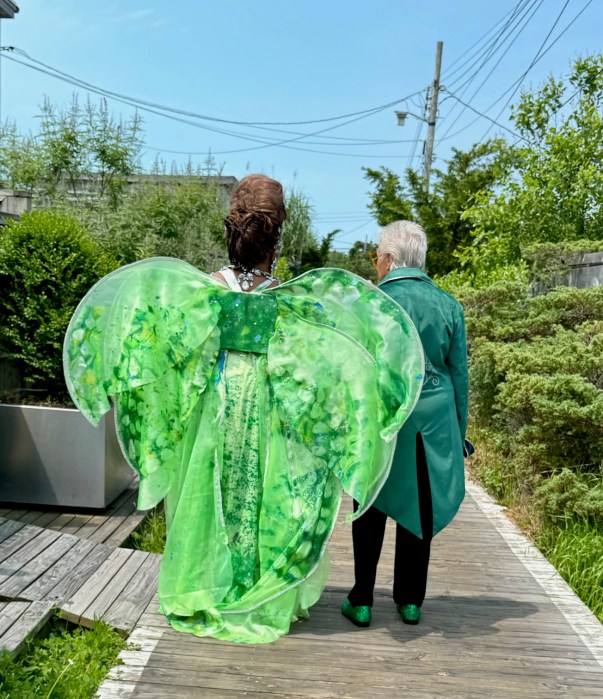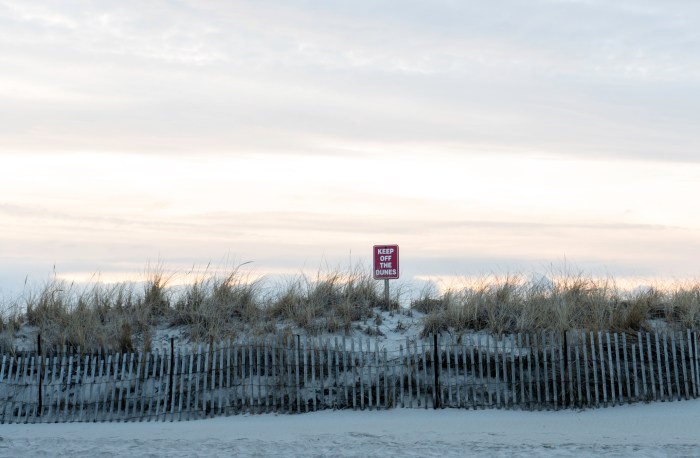By Anika Lanser Many Fire Islanders take it upon themselves to collect and dispose of litter they come upon during morning walks, evening swims, and stargazing strolls. Signs are posted encouraging those who visit our beautiful beaches to dispose of their garbage at the end of a long beach day. But what about microscopic plastics and pieces the size of small rocks that wash up on beaches and float through the oceans endangering the health and vitality of the entire ecosystem?The Protecting the Environment in Patchogue (PEP) committee recently received funding for a study that could begin to answer how we address the problem of these miniscule plastic pieces. Commonly referred to as microplastics, these small pieces of plastic largely come from synthetic fabrics, like polyester, and larger pieces of plastic that have been discarded and have broken down. Microplastic pollution is not necessarily a new concern, and there is some legislation in place to address microplastic pollution. For instance, in 2015 the Microbead- Free Waters Act prohibited the addition of plastic microbeads to hygiene products like face wash and toothpaste. The act acknowledged the adverse effect that microbeads were having on wildlife and marine ecosystems, but did not ban other limitations in place to address microplastics beyond microbeads. Studies across the globe indicate that microplastics have been found and observed in every marine habitat, and that all marine species are at risk as a result of microplastics.PEP applied to borrow a manta trawl through the EPA Region 2 Citizen Science Water Monitoring Equipment Loan Program. The program, which is just one piece of a larger government-funded Citizen Science Resource bank, allows citizen science groups to borrow equipment for their studies as long as they provide a Quality Assurance Project Plan, regular updates, and a final report. With the addition of the manta trawl, the study, headed by Fire Island National Seashore Parks Planner Kaetlyn Jackson, will sample the surface water for microplastics and determine the degree to which the water is saturated with them.PEP is also partnering with St. Joseph’s College and Stony Brook University in order to borrow a zooplankton net made of a finer mesh that will help PEP to determine which collection method future researchers should utilize. The organization will conduct surveys in the Patchogue Lake, Patchogue River, and the Great South Bay. As the boat moves through the water at a slow speed, the nets pulled behind the boat will collect the microplastics from the surface level of the water. At the end of a 15-minute period, the samples are collected from the net and taken to St. Joseph’s where Dr. Konstantinos Rountos and his students analyze them.On July 28, PEP conducted their first trawl of the Patchogue River, collecting six jars of water and suspended materials. PEP will continue trawling the three bodies of water monthly until October when the weather changes will begin to force the study’s conclusion. The project will culminate in Rountos’ analysis of the samples and the creation of an educational component to support the community in working to eliminate microplastic pollution of local waters. Because no similar studies have been conducted in the Patchogue area, the samples will be compared to microplastic studies completed in the Hudson River Valley and New Jersey instead.While as of yet the samples have not been analyzed, there is potential for this study to provide a better context for the degree to which microplastic pollution is found in the Patchogue area and Great South Bay and could also provide insight for future microplastic studies. As October draws near, keep an eye out for the conclusions of the PEP study and for the community education portion that will highlight behavioral and lifestyle shifts that could aid in the battle against microplastic pollution in our waters.
Many Fire Islanders take it upon themselves to collect and dispose of litter they come upon during morning walks, evening swims, and stargazing strolls. Signs are posted encouraging those who visit our beautiful beaches to dispose of their garbage at the end of a long beach day. But what about microscopic plastics and pieces the size of small rocks that wash up on beaches and float through the oceans endangering the health and vitality of the entire ecosystem?The Protecting the Environment in Patchogue (PEP) committee recently received funding for a study that could begin to answer how we address the problem of these miniscule plastic pieces. Commonly referred to as microplastics, these small pieces of plastic largely come from synthetic fabrics, like polyester, and larger pieces of plastic that have been discarded and have broken down. Microplastic pollution is not necessarily a new concern, and there is some legislation in place to address microplastic pollution. For instance, in 2015 the Microbead- Free Waters Act prohibited the addition of plastic microbeads to hygiene products like face wash and toothpaste. The act acknowledged the adverse effect that microbeads were having on wildlife and marine ecosystems, but did not ban other limitations in place to address microplastics beyond microbeads. Studies across the globe indicate that microplastics have been found and observed in every marine habitat, and that all marine species are at risk as a result of microplastics.PEP applied to borrow a manta trawl through the EPA Region 2 Citizen Science Water Monitoring Equipment Loan Program. The program, which is just one piece of a larger government-funded Citizen Science Resource bank, allows citizen science groups to borrow equipment for their studies as long as they provide a Quality Assurance Project Plan, regular updates, and a final report. With the addition of the manta trawl, the study, headed by Fire Island National Seashore Parks Planner Kaetlyn Jackson, will sample the surface water for microplastics and determine the degree to which the water is saturated with them.PEP is also partnering with St. Joseph’s College and Stony Brook University in order to borrow a zooplankton net made of a finer mesh that will help PEP to determine which collection method future researchers should utilize. The organization will conduct surveys in the Patchogue Lake, Patchogue River, and the Great South Bay. As the boat moves through the water at a slow speed, the nets pulled behind the boat will collect the microplastics from the surface level of the water. At the end of a 15-minute period, the samples are collected from the net and taken to St. Joseph’s where Dr. Konstantinos Rountos and his students analyze them.On July 28, PEP conducted their first trawl of the Patchogue River, collecting six jars of water and suspended materials. PEP will continue trawling the three bodies of water monthly until October when the weather changes will begin to force the study’s conclusion. The project will culminate in Rountos’ analysis of the samples and the creation of an educational component to support the community in working to eliminate microplastic pollution of local waters. Because no similar studies have been conducted in the Patchogue area, the samples will be compared to microplastic studies completed in the Hudson River Valley and New Jersey instead.While as of yet the samples have not been analyzed, there is potential for this study to provide a better context for the degree to which microplastic pollution is found in the Patchogue area and Great South Bay and could also provide insight for future microplastic studies. As October draws near, keep an eye out for the conclusions of the PEP study and for the community education portion that will highlight behavioral and lifestyle shifts that could aid in the battle against microplastic pollution in our waters.





























